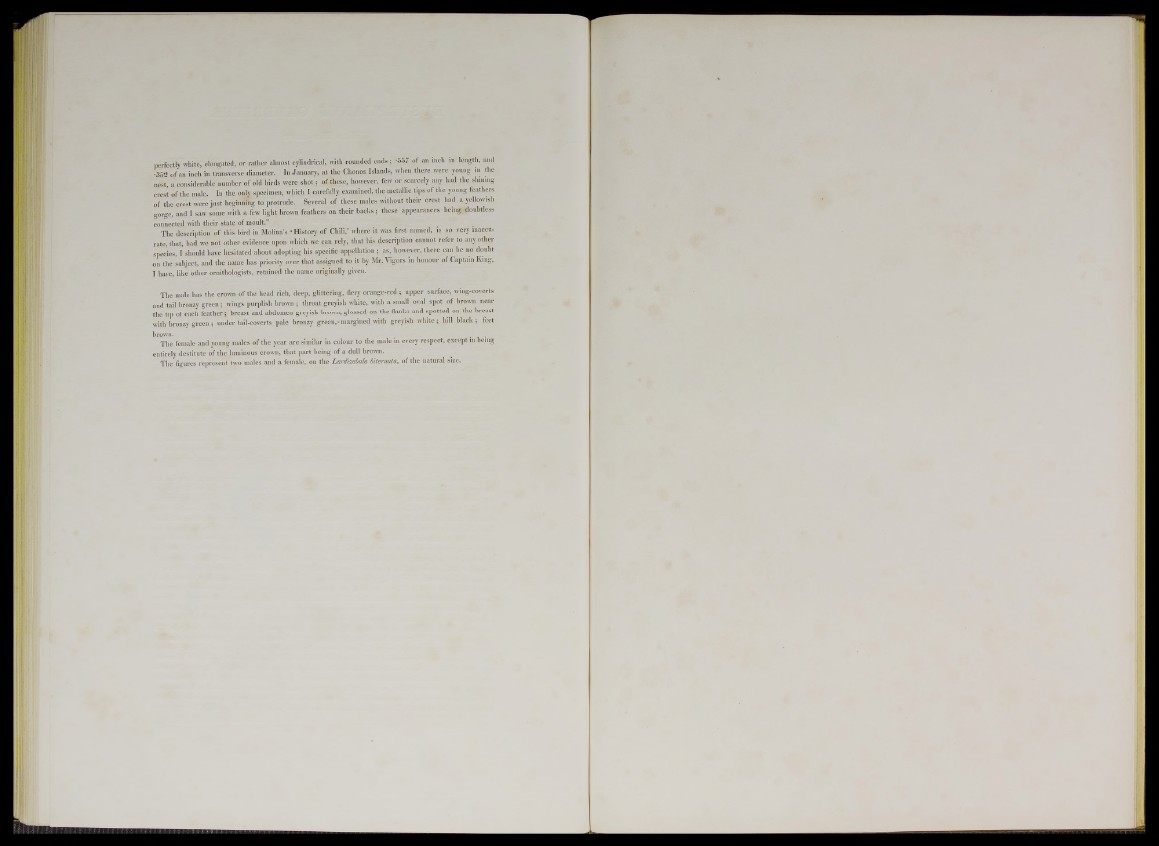
perfectly white, elongated, or rather almost cylindrical, with rounded ends; -557 of an inch in length, and
•352 of an inch in transverse diameter. In January, at the Chonos Islands, when there were young in the
nest, a considerable number of old birds were shot ; of these, however, few or scarcely any had the shining
crest of the male. In the only specimen, which I carefully examined, the metallic tips of the youug feathers
of the crest were just beginning to protrude. Several of these males without their crest had a yellowish
gorge, and I saw some with a few light brown feathers on their backs; these appearances being, doubtless
connected with their state of moult.”
The description of this bird in Molina’s ‘ History of Chili,’ where it was first named, is so very inaccurate,
that, had we not other evidence upon which we can rely, that his description cannot refer to any other
species, I should have hesitated about adopting his specific appellation ; as, however, there can be no doubt
on the subject, and the name has priority over that assigned to it by Mr. Vigors in honour of Captain King,
I have, like other ornithologists, retained the name originally given.
The male has the crown of the head rich, deep, glittering, fiery orange-red 5 upper surface, wing-coverts
and tail bronzy green; wings purplish brown ; throat greyish white, with a small oval spot of brown near
the tip of each feather; breast and abdomen greyish brown, glossed on the flanks and spotted on the breast
with bronzy green ; under tail-coverts pale bronzy green,*margined with greyish white; bill black; feet
brown. • _ . .
The female and young males of the year are similar in colour to the male in every respect, except m being
entirely destitute of the luminous crown, that part being of a dull brown.
The figures represent two males and a female, on the Lardizabala biternata, of the natural size.